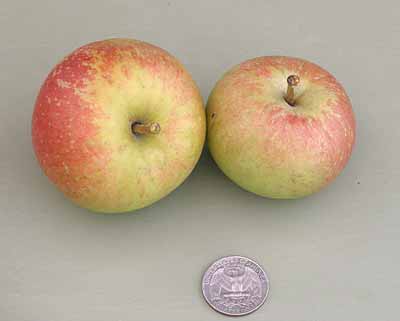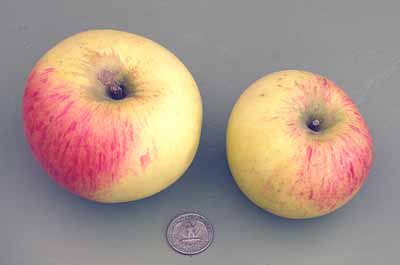
A variety of green, dual-purpose apple with red streaks and flushing known in England since the late 1800s. It was awarded the Royal Horticultural Society First Class Certificate in 1899. It retains its shape when cooked. This mid-season variety is harvested from mid-October in South-East England and is at its best from November to April.

A name for Peasgood's Nonsuch, a variety of apple which is sweet and delicate. This handsome yellow apple is streaked and blushed with red is prone to mildew. It cooks well and ends up with the same frothy consistency as bramley, but with more sweetness. It is also used in salads as it does not lose its colour quickly. It was raised in the 1850s by Mrs. Peasgood when she was a child in Grantham. She took it with her to Stamford and it was later introduced by Mr Thomas Laxton, being awarded the Royal Horticultural Society First Class Certificate in 1872 and the Award of Garden Merit in 1993. It is grown in France and the Low Countries as Sans Pareille de Peasgood. This mid-season variety is harvested from mid-September in South-East England and is at its best from September to December.
A light red or white Burgundy wine. Santenay produces red wines from Pinot Noir and, occasionally, whites. The soils in Santenay tend to be richer than the rest of the Cote de Beaune and, as a result, wines are more rustic than elegant. One of my first flashes of culinary experience was drinking Santenay with a Bourgogne cheese in Beaune. I remember taking a bite of the cheese and a sip of wine and then feeling simply overwhelmed by the extraordinary pleasure of everything being right.